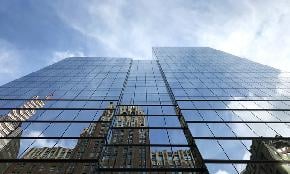 “Starbucks has become one of the most prominent and innovative retailers in today’s market,” says Asher.
“Starbucks has become one of the most prominent and innovative retailers in today’s market,” says Asher.
CORONA DEL MAR, CA—A recent rate hike (with more on the horizon) hasn’t mellowed Starbucks’ current buzz for retail net-lease investors. The single-tenant retail investment market remains hot, especially for national credit tenants on long-term leases. That’s according to Bill Asher, EVP at Hanley Investment Group, who says this category will be the last to adjust to changing rates, as most buyers are acquiring single-tenant assets all-cash with no debt. He notes the largest pool of buyers still exist in this sector, and it’s producing record pricing for sellers. “Buyers continue to pay premium yields in the 4.0%-5.5% range unleveraged and even most recently sub-4% for tenants such as Starbucks located in major MSAs nationally,” Asher says.
GlobeSt.com talked with Asher to get his thoughts on the investment prospects for the coffee retailer.
GlobeSt.com: What kind of investor activity are you seeing with single-tenant Starbucks across the country?
Asher: In California, four single-tenant Starbucks properties sold below a 4.25% cap rate in Q4 2016, and three more closed below a 4.15% cap rate in Q1 2017, according to CoStar research. On a national level, there were 79 single-tenant Starbucks properties that sold in 2016, 18 of those sold below a 5% cap rate, with 17 acquired by buyers based in California. In January 2017, Hanley Investment Group completed the sale of a new construction single-tenant Starbucks with a drive-thru located in Redlands, CA. The purchase price of $2.6 million represented a cap rate of 3.76%. According to CoStar, this sale achieved multiple records – one of the lowest cap rates nationwide for a single-tenant Starbucks and one of the lowest cap rates for a fee-simple Starbucks in Southern California.
GlobeSt.com: Why are investors willing to pay premium pricing for a Starbucks-leased investment?
Asher: Starbucks has become one of the most prominent and innovative retailers in today’s market. As a net-leased investment, they provide the investor with a high level of confidence and security and triple-net leases that require little to no maintenance since the tenant pays all expenses. Further, the stores are situated in high-traffic locations with strong demographics. Even with the transition of Kevin Johnson assuming the role of president and CEO, and Howard Schultz becoming executive chairman, effective April 3, 2017, Starbucks continues to deliver record financial performance including 2016 revenue of $21.316 billion amounting to approximately $850,000 average sales per store and 80 to 90 million customers a week.
GlobeSt.com: What emerging trends do you see on the horizon for Starbucks-leased investments?
Asher: Developers will continue to build new—or repurpose outdated—sites previously occupied by independent gas stations or auto-related businesses (for example) with a new Starbucks, the majority of which will include a drive-thru. Approximately 60%-70% of all business for quick-serve restaurants comes through the drive-thru. Average store sales are approximately 50% greater in Starbucks locations that have a drive-thru, which has created a goal for Starbucks to have drive-thrus in half of its stores by 2020. By 2019, Starbucks expects to grow from $16 billion to $30 billion in revenue, with 60% of all new locations including a drive-thru. It’s no surprise they have plans in the next five years to grow revenue by 10% and open approximately 12,000 new stores globally by 2021. Watch for an increase in newer “drive-thru only” Starbucks formats (typically less than 1,000 sq.ft. with no interior café) in the near future that situated on smaller corner lots in high-traffic locations.
GlobeSt.com: What else should our readers know?
Asher: Larger multi-tenant shopping centers priced $5 million and up have started to change, with noticeable price adjustments in the marketplace in early January 2017. The most dramatic difference early on in 2017, compared to the third and fourth quarters of 2016, is the overall renewed activity from investors in the market nationwide. The “wait and see” attitude leading up to last year’s election has now passed and investor activity has at least doubled compared to 6-12 months ago. Bullish economic news, including consumer and housing confidence, has helped fuel investor demand as available equity to deploy in retail remains at an all-time high, while the supply of quality product to choose from has been tepid in the first quarter of 2017. Many investors expected a more robust amount of retail assets to hit the market in early 2017. Feedback to date from buyers in the market this year, whether a small private investor or a REIT, is the lack of available class A investments located in dense infill locations. Investors may have to consider stretching their acquisition criteria outside of their comfort zone this year, otherwise, they may find themselves on the sidelines. However, one thing that figures not to change this year is the continued mass consumer coffee consumption and private investors’ thirst for single-tenant Starbucks investments.
Visit Hanley Investment Group at Booth #S381S at ICSC RECON in Las Vegas.

















 Copyright © 2024 ALM Global, LLC. All Rights Reserved.
Copyright © 2024 ALM Global, LLC. All Rights Reserved.